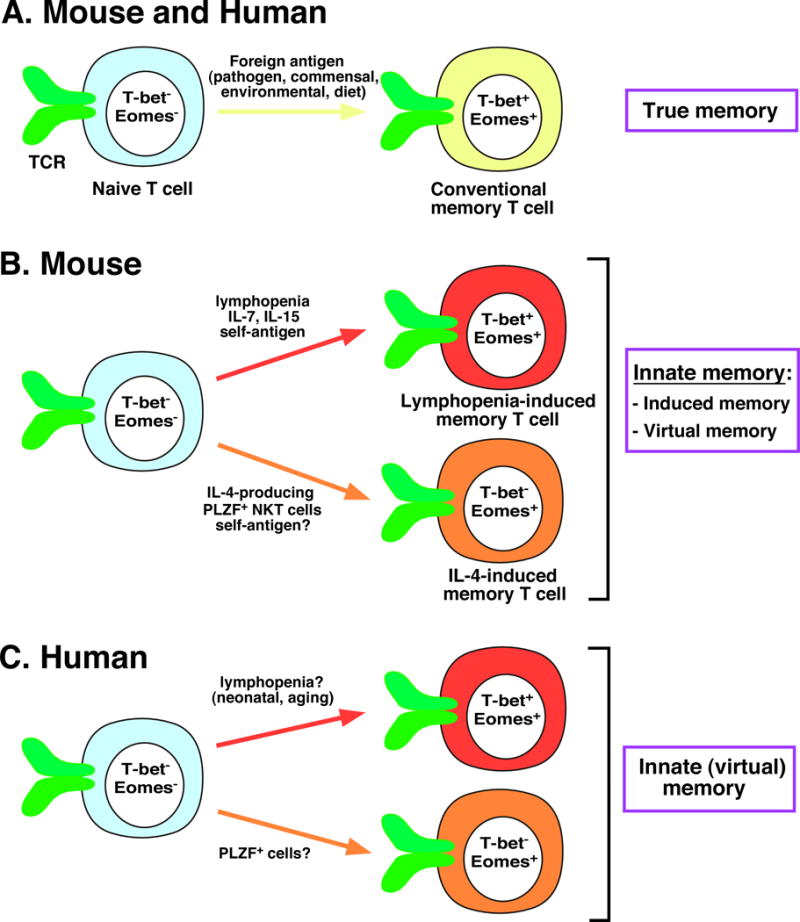Figure 1.

Pathways for the generation of distinct memory T-cell populations in mice and humans. (A) Naïve T lymphocytes in both mice and humans can differentiate into conventional, or “true” memory T cells in response to foreign antigens. (B) Alternatively, naïve T cells in mice can adopt a memory phenotype independently of foreign antigens to become innate memory T cells. Such cells may be induced following lymphopenia with the assistance of self-antigens and cytokines such as IL-7 and IL-15 to become lymphopenia-induced memory T cells (top), or in response to the cytokine IL-4 produced by PLZF+ NKT cells to become IL-4-induced memory T cells (bottom). Both of these alternative pathways of memory cell generation may occur in response to alterations in the environment, called induced innate memory, or under steady-state conditions, called virtual memory. (C) The new study from Jacomet et al. [9] validates the presence of innate (predominantly virtual) memory T cells in humans, which may be generated in response to either lymphopenia (top) or IL-4 (bottom). Precise mechanisms for the generation of these cells in humans remain to be determined. Differences in the expression of critical transcription factors between naïve T cells and distinct subsets of memory T cells are depicted.
